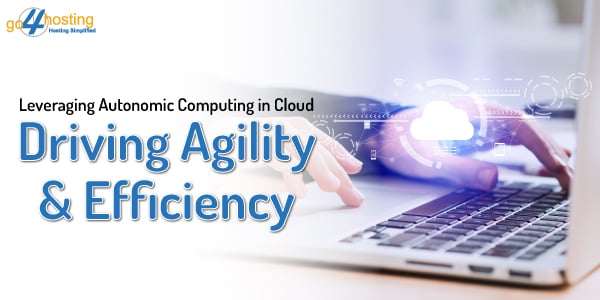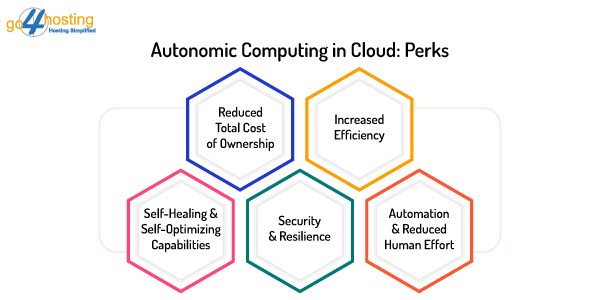Leveraging Autonomic Computing in Cloud-Driving Agility and Efficiency

Contents of Table
Autonomic Computing- an idea introduced by the former vice president of research, IBM, Paul Horn, at Harvard University in March 2001. It is a visionary computing concept that aims to create self-managing and self-healing computer systems. It signifies the self-managing traits of distributed computing resources that recognize and understand any change in the system while taking appropriate corrective actions automatically without human intervention. This technology has evolved over the years. Over this period, it has been influenced by advancements in artificial intelligence, cloud computing, and cyber-physical systems.
What Exactly is Autonomic Computing?
The concept of autonomic computing is inspired by the human body’s autonomic nervous system, which regulates body processes. The goal is
to
- reduce the complexities of computer system management
- improve self-healing,
- foster self-optimization,
- boost self-organization,
- cultivate self-security.
Autonomic computing has the potential to remove flaws from cloud computing and enable intelligent, adaptive behaviors within systems. Thus allowing them to autonomously respond to changing environmental stimuli. It encompasses self-managing systems that can make flexible decisions, continuously inspect and optimize their own systems, and react to stimuli independent of human consciousness.
The architecture of autonomic computing includes essential components such as autonomic elements and autonomic managers, which enable the system to anticipate resource demand and perform self-healing, self-optimization, and self-protection. The interaction styles performed by sensor and effector operations include sensor healing state, sensor receive-notification, effector perform-operation, and effector call-out-request. This concept can be applied to various areas, such as IT infrastructure management, cloud computing, and artificial intelligence.
Overall, the operational mechanism of autonomic computing is designed to create self-managing systems. It can operate with minimum human intervention, similar to the autonomic nervous system in the human body.
Characteristics of Autonomic Systems
Autonomic computing aims to develop computer systems capable of self-management, adapting to unpredictable changes while hiding intrinsic complexity to operators and users. IBM has illustrated four areas of autonomic computing as:
1. Self-Configuration
The system must be able to configure itself automatically according to the shifts in its environment. It should be able to add new components, configure its components, get rid of old or faulty ones, and reconfigure them without human interference or intervention.
2. Self-Healing
An autonomic system must have the property to repair itself. It should be able to identify faulty components, diagnose them using a corrective mechanism, and heal itself without damaging or harming any other system components.
3. Self-Optimization
According to IBM, an autonomic system must be able to perform optimally and ensure its performance is always at the highest level. It is also known as an autonomic system’s self-adjusting or self-tuning property.
4. Self-Protection
An autonomic system must be able to detect and identify various attacks on it. Moreover, it should be able to protect itself from security and system threats and maintain its security and integrity.
These characteristics make autonomic computing systems adaptive and self-managing. As a result, it can handle unpredictable environmental changes.
Comparative Analysis of Autonomic Computing and Cloud Computing
Cloud computing and autonomic computing are two distinct paradigms in the same field. The former is a model for delivering computing resources as services over the Internet. The latter is a concept that aims to increase reliability, autonomy, and performance. Each has advantages and challenges, and the choice between them depends on the organization’s or individual’s specific needs. Here is a comparative analysis of the two:
| Cloud Computing | Autonomic Computing |
| Delivers infrastructure, platform, and software as services over the Internet.Allows consumers to start with small resources and increase them when needed, eliminating the need for advanced planning.Key challenges include the need for automated and integrated resource management. | Enables systems to adapt to changing environments and manage themselves automatically.Focuses on increasing reliability, autonomy, and performance.Key challenges include the need for scientific and technological advances. It also necessitates the new software and system architectures to support effective integration. |
How Does Autonomic Resource Provisioning Work in Cloud Computing?
Autonomic resource provisioning in cloud computing involves using automated techniques to allocate and release computing resources based on the current demand. It is achieved through control MAPE loops, hybrid approaches, and MAPE-K loops, which enable automatic resource allocation and scheduling decision-making.
The elasticity of cloud computing allows for dynamic requests and the relinquishing of computing and storage resources. It helps boost user experience and reduce servicing costs. The Autonomic Resource Provisioning and Scheduling (ARPS) framework has been developed to provide decision-making capabilities for resource provisioning and scheduling in cloud platforms. It utilizes auto-scaling techniques to add or remove resources on the fly automatically. Thus maintaining optimal user experience while paying only for what has been consumed.
Benefits of Using Autonomic Computing in Cloud Infrastructure
The benefits of using autonomic computing in cloud infrastructure are significant. Autonomic computing brings self-managing characteristics to distributed computing resources, adapting to unpredictable changes while hiding intrinsic complexity from operators and users. Five key benefits of leveraging autonomic computing for cloud infrastructure include:
1. Reduced Total Cost of Ownership (TCO)
Autonomic computing decreases maintenance costs and deployment time while increasing the stability of IT systems through automation. Businesses can utilize the autonomics concept for automated purchase of reserve capacity, according to their needs. Moreover, the automated workload movement from one cloud provider to another will also boost cost efficiency.
2. Increased Efficiency
Autonomic systems can automatically provision and configure resources, improving performance and scalability. Businesses can utilize autonomic cloud computing to increase the machine type of workload employed to support non-horizontally scaling workload operations.
3. Self-Healing and Self-Optimizing Capabilities
Autonomic computing provides self-repairing and self-optimizing capabilities. It can lead to increased stability and reduced downtime. Automated data migration to another region can support the business service level agreements (SLAs). It can be further used for storage backup from one medium to another.
4. Security and Resilience
Businesses can benefit from the autonomic cloud system to change the endpoint or network security to the points that conform to established business policies. Autonomic systems can detect, identify, and protect themselves against various types of attacks, enhancing the overall security of the cloud infrastructure.
5. Automation and Reduced Human Effort
Autonomic computing reduces the need for human intervention in managing systems, leading to reduced human effort and operational costs. With its assistance, businesses can automate the shutdown of long-running or idle resources to support their business policies.
My Two Cents

The danger wasn’t considered real when IBM shared its vision of the impending software complexity management. There was research on the same; however, its impact on the industry was limited until cloud technologies came into the picture.
Autonomic computing is a valuable addition to cloud infrastructure. Businesses wouldn’t require extra resources to optimize cloud infrastructure’s cost, usage, or security. It will be executed automatically in accordance with business policies. By automating the management of IT resources and enabling self-adaptive systems, autonomic computing can help businesses and organizations achieve greater efficiency and agility in their cloud computing environments. It offers businesses a hassle-free and cost-effective cloud experience- the ultimate aim of go4hosting.
Citations:
- https://www.linkedin.com/pulse/autonomic-cloud-computing-based-management-security-hitesh-jhamtani/
- https://www.sciencedirect.com/topics/computer-science/autonomic-computing
- https://www.comparethecloud.net/articles/why-the-future-of-cloud-lies-in-autonomics/
- https://www.engati.com/glossary/autonomic-computing
- https://iucrc.nsf.gov/centers/cloud-and-autonomic-computing/
- https://en.wikipedia.org/wiki/Autonomic_computing
- https://www.geeksforgeeks.org/what-is-autonomic-computing/
- https://u-next.com/blogs/artificial-intelligence/autonomic-computing/
- https://www.linkedin.com/pulse/future-cloud-autonomics-joe-kinsella
- https://www.walshmedicalmedia.com/open-access/autonomic-computing-and-its-significance.pdf
- https://www.academia.edu/12120731/Advantages_of_Autonomic_Computing_over_Cloud_Computing_Comparative_Analysis
- https://www.bbvaopenmind.com/en/technology/digital-world/what-is-autonomic-computing/
- https://arxiv.org/pdf/1209.3356.pdf
- https://www.e-spincorp.com/what-are-the-benefits-of-autonomic-system/
- https://www.linkedin.com/pulse/autonomic-cloud-computing-based-management-security-hitesh-jhamtani
- https://www.itexchangeweb.com/blog/the-emerging-role-of-autonomic-systems-for-advanced-it-service-management/
- http://hareenlaks.blogspot.com/2011/03/benefits-of-autonomic-computing.html
- https://www.comparethecloud.net/articles/why-the-future-of-cloud-lies-in-autonomics/
- https://www.linkedin.com/pulse/autonomic-computing-trend-habilelabs
- https://www.sciencedirect.com/science/article/abs/pii/S0167739X17302327
- https://link.springer.com/article/10.1007/s10586-016-0574-9
- https://www.ibm.com/docs/en/db2/11.5?topic=servers-autonomic-computing-overview






